Key Takeaways
- Russian officials remain confused about the August 9 attack on the Saki Air Base in Russian-occupied Crimea, over 225km behind Russian lines, which destroyed at least eight Russian aircraft and multiple buildings.
- The Kremlin’s changing plans suggest that occupying forces are most likely to move up the date of the annexation referenda in occupied Ukraine. Annexation makes it harder to imagine any negotiated settlement to the war on any terms that Ukraine or the West could accept, demonstrating that the Kremlin is fundamentally unserious about ending the war on any terms short of a Ukrainian surrender.
- Iran reportedly began training Russian forces on Iranian UAV systems in recent weeks, demonstrating the deepening military cooperation between Iran and Russia.
- Russian forces conducted ground attacks west of Izyum.
- Russian forces continued limited ground assaults northeast and west of Bakhmut and likely made marginal gains in these areas.
- Russian forces made marginal gains northwest of Donetsk City and are continuing attempts to push northwestward from current footholds on the outskirts of Donetsk City.
- Russian forces conducted multiple unsuccessful offensives north and northeast of Kharkiv City.
- Russian forces conducted an unsuccessful reconnaissance-in-force operation in northwestern Kherson Oblast
- Russia’s Oryol Oblast is reportedly forming a volunteer battalion.
Ukrainian officials framed the August 9 attack in Crimea as the start of Ukraine’s counteroffensive in the south, suggesting that the Ukrainian military expects intense fighting in August and September that could decide the outcome of the next phase of the war. A Ukrainian official told Politico on August 10 that “you can say this is it” when asked about the start of Ukraine’s planned counteroffensive.[1] Ukrainian President Volodymyr Zelensky vaguely noted on August 10 that the war “began with Crimea and must end with Crimea – with its liberation.”[2]
Russian officials remain confused about the August 9 attack on the Saki Air Base in Russian-occupied Crimea, over 225km behind Russian lines, which destroyed at least eight Russian aircraft and multiple buildings. Satellite imagery confirmed reports from Ukraine’s air force that the attack destroyed at least eight Russian aircraft, contradicting Russian claims that the explosions did not damage any aircraft and were not the result of an attack.[3] Russian outlets shared conflicting stories: the Russian Ministry of Defense claimed on August 9 that munitions had been detonated at a storage site at the airfield due to negligence, not an attack, and claimed that no aircraft were damaged.[4] Russian milblogger Rybar claimed on August 10 that the explosion was likely not caused by a missile strike and hypothesized that the explosions could be due to negligence and non-compliance with safety regulations or to a small helicopter with a bomb attacking a nearby parking lot.[5] Mixed stories in Russian media and among Russian milbloggers indicate that either officials within the Russian Ministry of Defense have competing theories regarding the attack and are sharing them with the media, or that the Kremlin has failed to coordinate its information operation to deny that Ukraine conducted a successful attack so far behind Russian lines. Russian forces at the airbase likely know by now what happened but may not yet understand how or from exactly where Ukrainian forces conducted the attack.
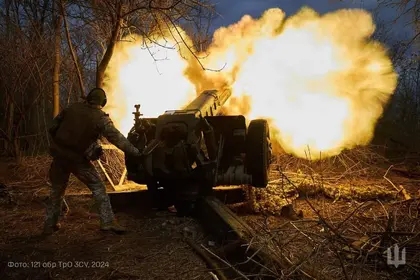
Ukraine Regains Position Near Chasiv Yar as Russia Intensifies Offensive
Ukrainian officials are playing up the evident Russian confusion surrounding the attack to obfuscate Ukraine‘s longer-range capabilities. An anonymous Ukrainian official told the New York Times that the attack was carried out with the help of partisans.[6] Another anonymous Ukrainian official told the Washington Post that Ukrainian special forces caused the explosion, while other Ukrainian officials implicitly referenced the attack but did not overtly take credit for it.[7] ISW still cannot independently assess what caused the explosions at the airfield—satellite imagery depicts multiple craters and scorch marks, but such damage could have been caused by many things–special forces, partisans, or missiles, on-site or from a distance.
Nevertheless, Ukrainian military officials took credit for two long-range missile strikes on an ammunition depot in Novooleksiivka in Henichensk district (north of Crimea) and on the battalion tactical group (BTG) command post of the 217th Guards Airborne Regiment in the Maksyma Horkoho on the southwestern Kherson Oblast coast.[8] The settlements are situated 100km and 170km south of frontlines along the Kherson Oblast administrative border respectively. Ukraine’s claimed attacks demonstrate longer-range missile capabilities but do not demonstrate the range they would have needed to hit the Saki Air Base from along the front lines. Ukrainian forces have various systems that they could have used or modified to hit Russian military infrastructure in Crimea or southern Kherson Oblast.
The Kremlin’s changing plans suggest that occupying forces will likely move up the date of the annexation referenda in occupied Ukraine. The advisor to Ukraine’s Kherson Oblast Civil Military Administration, Serhiy Khlan, claimed on August 10 that occupation forces have stopped discussing September 11 as a date for Russia’s sham referenda on the annexation of occupied Ukrainian territories.[9] ISW previously assessed September 11, the date that polling will be held in local and regional elections across the Russian Federation, to be the most likely date for annexation referenda to be held.[10] Khlan noted that Russian occupation forces had referred to September 11 as the date of the sham referenda, “but now the dates are again unclear.” Occupation authorities have taken measures to be able to hold sham referendums at any time—ISW reported on August 3 that Russian forces would offer easily manipulated “online voting” in the Donetsk Oblast referendum and reported on August 7 that occupation forces in occupied Zaporizhia Oblast were planning door-to-door “surveys” of the local population.[11]
The political, military, economic, and other consequences of a prolonged Russian military occupation of southern and eastern Ukraine would be devastating to the long-term viability of the Ukrainian state.[12] The performative drama of annexation will not change the on-the-ground realities created by the brutal Russian occupation. Forced passportization, rubleization, “filtration,” and other “integration” measures already underway in Russian-occupied areas are far more important and damaging to Ukraine than the referenda would be.[13]
Ukrainian nuclear operating enterprise Energoatom Head Petro Kotin suggested that Ukrainian forces interrupt power lines leading to the Zaporizhia Nuclear Power Plant (ZNPP) should Russian forces start disconnecting the ZNPP from the Ukrainian power system.[14] Kotin told Reuters on August 9 that Russian forces intend to damage all power lines to the ZNPP and connect the plant to the Russian power grid, effectively stealing the ZNPP from the Ukrainians.[15]
The Embassy of Uzbekistan in Russia cautioned the Uzbek diaspora that any form of participation in the Russian invasion of Ukraine is punishable by up to 10 years in Uzbek prison, effectively denouncing Russian volunteer recruitment efforts among Central Asian immigrants. The Embassy noted that Uzbek law prohibits all citizens from engaging in mercenary activity and warned Uzbeks to stay clear of any “provocations.”[16] ISW has previously reported that the Chairman of the Society of Central Asian Uzbeks of Perm Krai, Jahongir Jalolov, called on Uzbek nationals living or working in Perm Krai to form a volunteer battalion in Perm Krai to support Russian forces in Ukraine.[17] Russian propagandist Margarita Simonyan supported Jalolov’s proposal and celebrated the loyalty of the Uzbek diaspora in Russia.[18] The Embassy statement was likely a response to Jalolov’s announcement.
Iran reportedly began training Russian forces on Iranian UAV systems in recent weeks, demonstrating the deepening military cooperation between Iran and Russia. A US official told CNN that “Russian officials conducted training in Iran as part of the agreement for UAV transfers from Iran to Russia,” citing newly declassified US intelligence.[19] Russia launched a satellite on Iran’s behalf on August 9, likely in exchange for the drones and other military equipment and economic collaboration.[20] Iran may leverage new Russo-Iranian aviation deals to transfer UAVs to Russia for use in Ukraine.[21]
Authors: Kateryna Stepanenko, Katherine Lawlor, Angela Howard, Layne Philipson, Karolina Hird, George Barros, and Frederick W. Kagan
See the full report here.
You can also highlight the text and press Ctrl + Enter


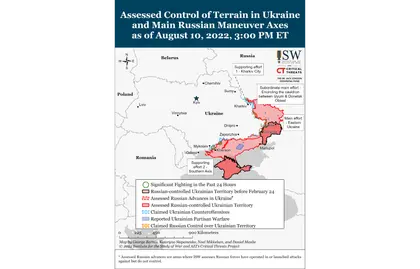
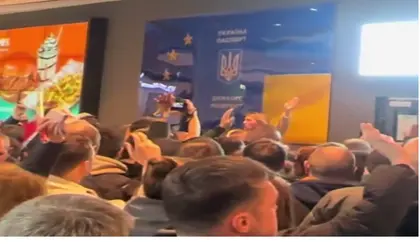
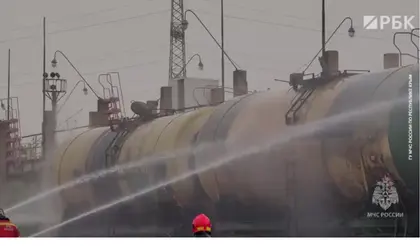
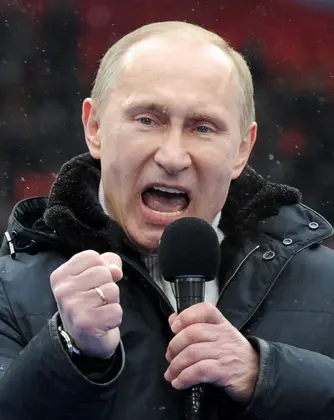
Comments (0)